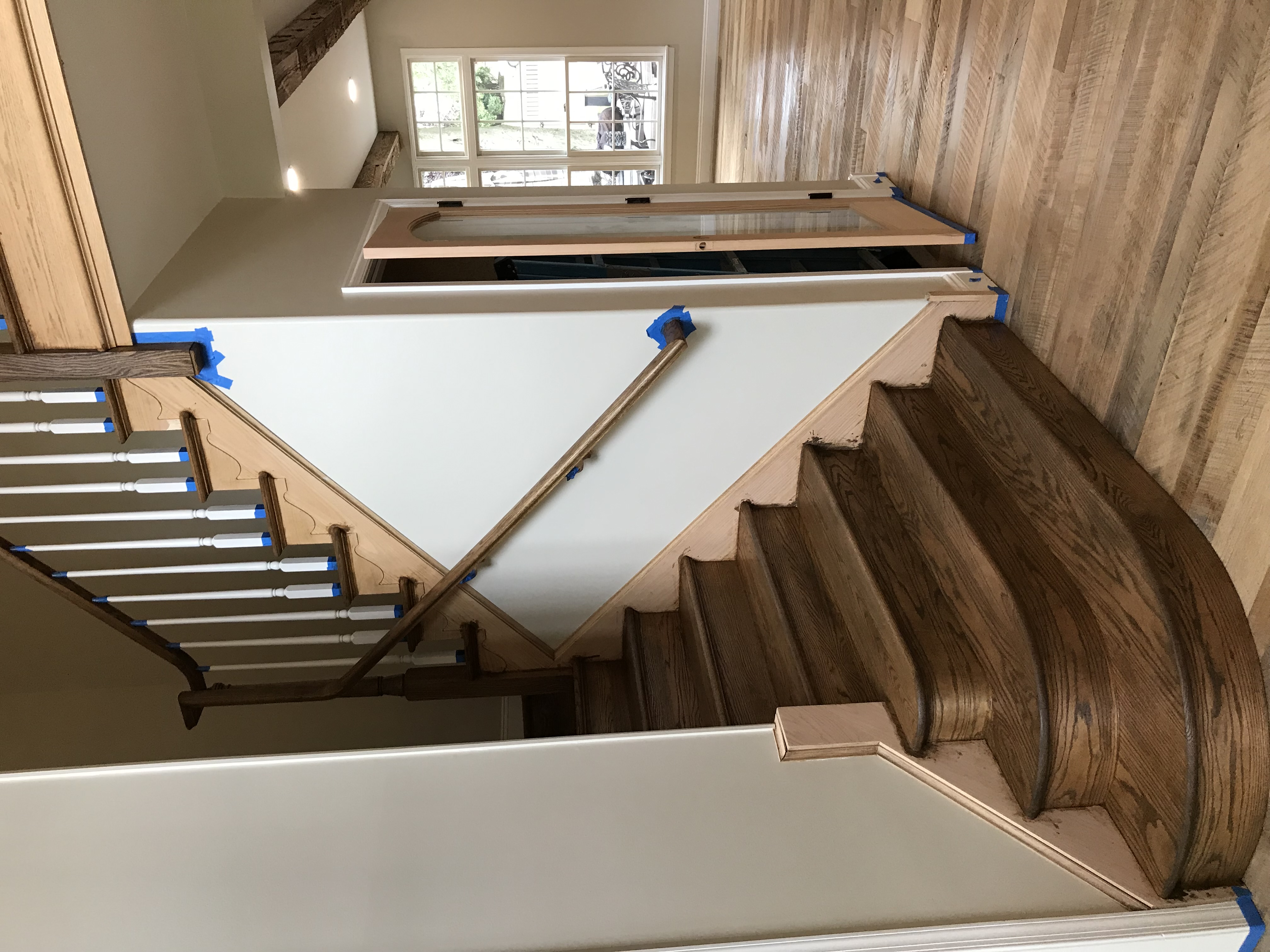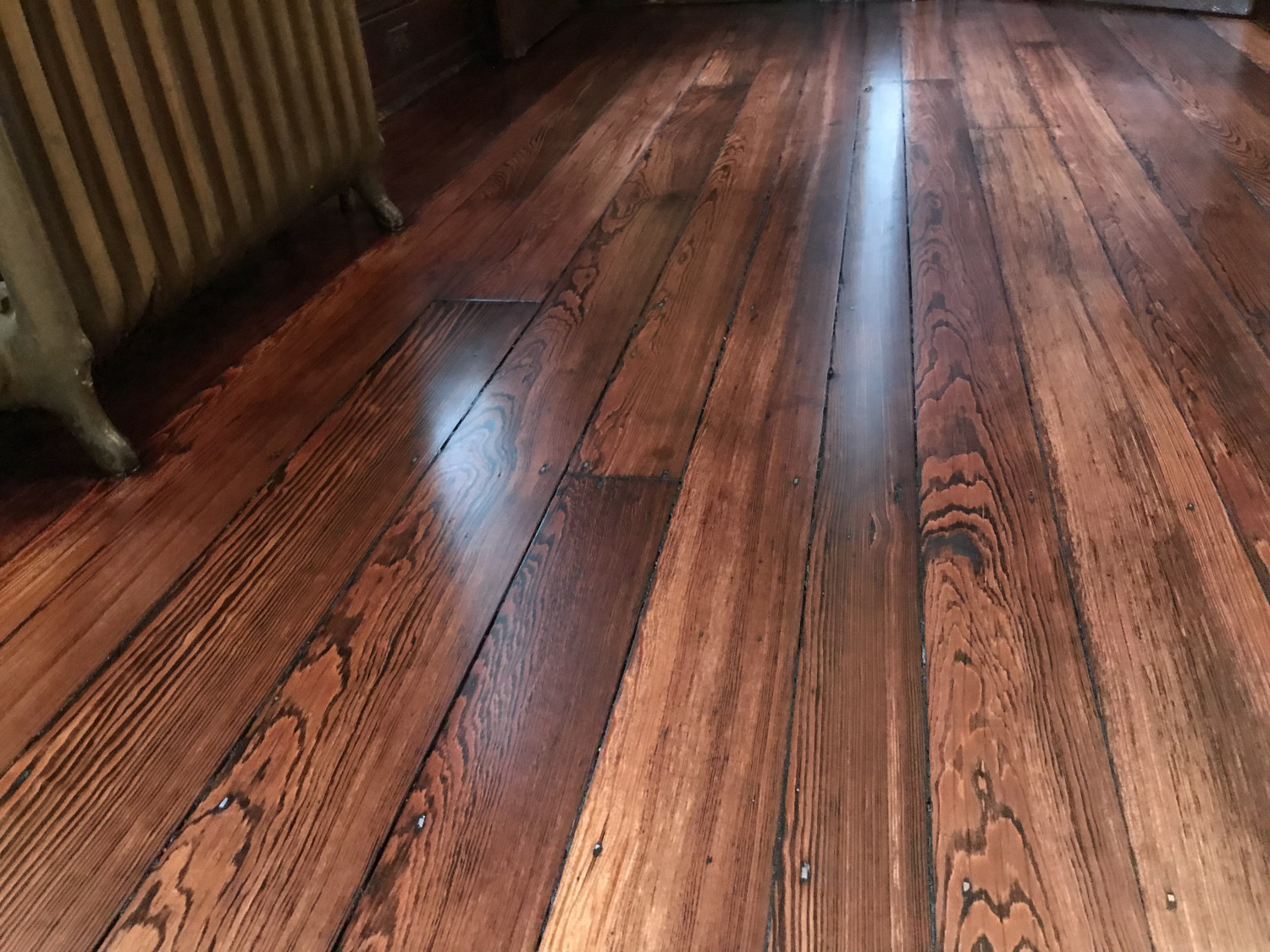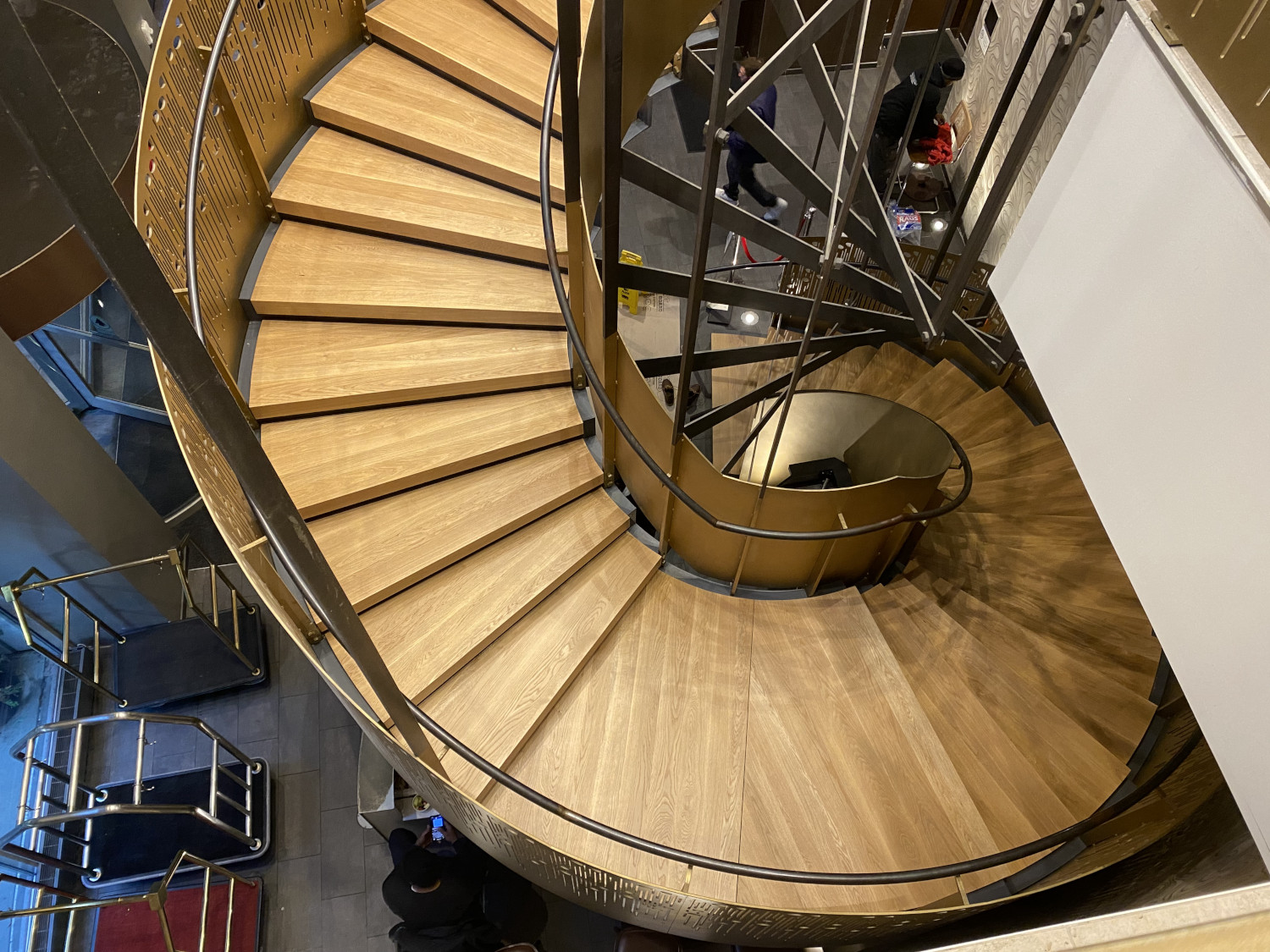Three Reasons Why Your Stairs Squeak and How to Eliminate the Squeaks
It is not uncommon for a set of stairs to squeak, especially in older homes.
There are a few reasons why hardwood staircases squeak.
Hardwood stairs are made from dozens of wooden pieces and parts that make up the treads, risers, and stringers, which are the main components of a stair. Over time, it is inevitable that the stairs, made up of all these wooden pieces, will squeak.
So, why do stairs squeak?
Reason #1: Foot Traffic
Just like hardwood floors, your staircase will suffer from prolonged use, known as wear and tear. The more foot traffic your staircase experiences, the more likely the stairs will begin to squeak.
Reason #2: Old Age
Just like the joints in our body, the joints of a wooden staircase will begin to show signs of aging over time. While joints in the human body tend to get tighter with age, the joints in a staircase will loosen, causing the stair treads to rub against the risers and stringers, resulting in squeaky stairs.
Reason #3: Expansion and Contraction
It is not uncommon for the wood in your staircase to expand and contract with the seasons just like your wood floors do with temperature changes. Over time, this contributes to the loosening of the wooden joints. This can also cause cracks in the woodfloor staircase.
Combining all of these factors, all the parts that make up your staircase, including the nails and screws that hold it together, begin to rub against one another, causing a squeak fest that can become unbearable. Even newer staircases, which ditch the screws and nails in favor of glue to bind all the wooden parts of the stairs, can still squeak over time.
Never fear, however, because wood stairs are quite easy to fix. But don’t go it alone. Fixing squeaky stairs is a two-person job. So, grab a buddy and take the following steps to repair your squeaky wooden staircase.
How to Fix Squeaky Stairs
Step #1: Know the Staircase
Stairs consist of three parts:
- Treads: The horizontal wood piece you step on is known as the tread.
- Risers: The vertical wood piece that rises from the back of the tread is called the riser.
- Stringers: The treads and risers of each stair rest on stringers, which are the framework of the stair itself.
Most stairs have three stringers, including one on either side and one in the middle. Wider staircases might have more stringers for additional support.
Step #2: Locate the Squeak
As you walk up (or down) the staircase, listen for your stair’s wood floor making sounds – and test the tread by stepping down on each area, side to side and front to back. You can usually determine where a gap has grown, allowing for loosening and rubbing.
While locating the tread and riser locations is easy, finding stringer locations can be more difficult if you cannot access the underside of the staircase. Typically a dental tap with a hammer along the tread will help you locate the stringer. Simply listen for areas that sound duller than the rest. That’s where you’ll find your stringer. On older staircases, the location of nails and screws will indicate the stringer location.
Stringers are typically 1.5 to 2 inches thick.
Step #3: Apply a Lubricant
As mentioned above, steps often squeak because wood pieces are rubbing together. In that case, you’ll want to apply lubricant between the components. Proper lubricants include talcum powder, powdered soapstone, and powdered graphite.

Step #4: Tighten the Gaps with Finishing Nails
Have your helper stand on either side of the squeak, allowing the tread to be in contact with the riser or stringer below. You will use be using three-inch finishing nails to close the gaps.
Mark two spots along the tread, to the riser or stringer underneath, and drill starter holes for the nails. Create holes with a diameter that is smaller than the nails you are using to create shallow starter holes. Leave enough space so the nails will not intersect. Hammer in the nails at a 45-degree angle until the heads are lower than the surface. Use wood putty to cover the holes.
Alternative Step #1 – #4:
Hire a Wood Floor Expert to Address Squeaky Stairs
Sometimes the best-laid plans go awry, and a DIY fix isn’t always your best option.
Hiring a wood floor expert, like the ones from the Artisan Wood Floors team, is the best option for repairing a squeaky wood floor staircase. In the end, you can protect your wood staircase from costly mistakes you might make attempting a DIY repair.
The Pennsylvania wood floor installation experts from Artisan Wood Floors have decades of experience in wood flooring and wood staircase repair throughout Philadelphia and the surrounding area.
Call 215-515-7355 today and ask for Steve!
Recent Hardwood Flooring Projects in Philadelphia & NJ





0 Comments